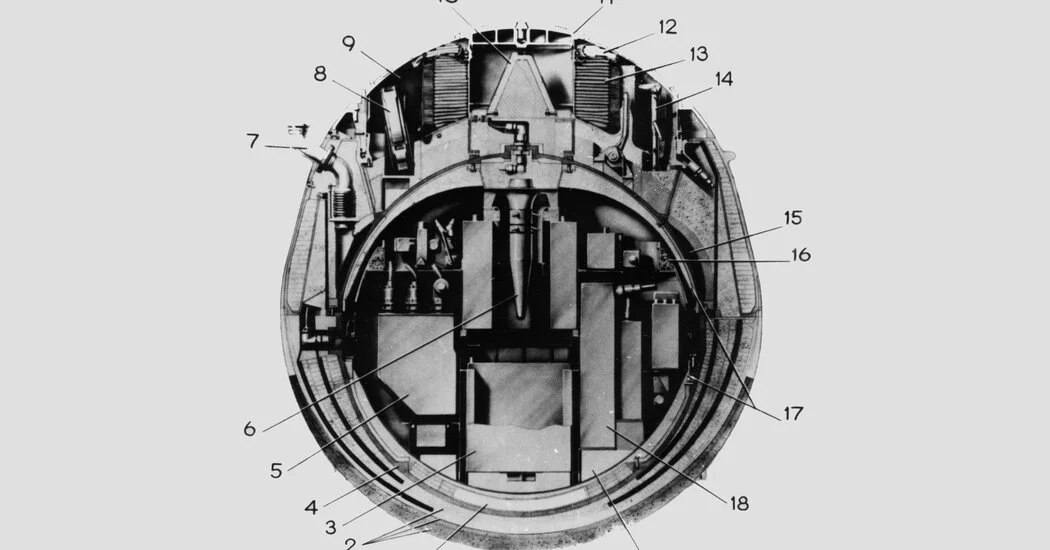
Lost in Space, Found on Earth: Soviet Venus Probe Kosmos-482 Makes Unexpected Return After 53 Years
After over half a century adrift in space, the remnants of the Soviet Union's ambitious Venus exploration program have literally come back down to Earth. The Kosmos-482 spacecraft, launched in 1972 as part of the Venera program, made an unexpected return, sparking both nostalgia for the golden age of space exploration and a reminder of the potential hazards of space debris.
Launched with the ambitious goal of landing on Venus, Kosmos-482 encountered a critical malfunction early in its mission. A rocket booster failed, stranding the spacecraft in an elliptical orbit around Earth. For 53 years, it circled our planet, gradually losing altitude until atmospheric drag finally pulled it back in. Roscosmos, the Russian state space corporation, reported that the spacecraft re-entered Earth's atmosphere on Saturday and likely splashed down in the Indian Ocean west of Jakarta, Indonesia.
While the precise location and the integrity of Kosmos-482 upon re-entry remain somewhat uncertain, the event has captured the attention of space enthusiasts worldwide. Jonathan McDowell, an astrophysicist at the Harvard & Smithsonian Center for Astrophysics, described it as a "bittersweet moment," recalling a time when the Soviet Union was at the forefront of space exploration alongside the United States.

The Venera program, though perhaps overshadowed by the American race to the moon, achieved remarkable feats. From 1961 to 1984, the Soviets launched numerous spacecraft towards Venus, enduring countless failures but also achieving groundbreaking successes. They were the first to land a probe on another planet (Venera 7 in 1970) and to transmit images from the Venusian surface (Venera 13 in 1982). Asif Siddiqi, a historian specializing in Soviet-era space activities at Fordham University, notes, "Kosmos-482 is a reminder that, 50 years ago, the Soviet Union reached the planet Venus. Here is a physical artifact of that project, of that time."
While Kosmos-482 returned to Earth largely unnoticed, similar re-entries are becoming increasingly common. Greg Henning, a space debris expert at the Aerospace Corporation, explains that "Re-entries are very frequent now. We’re seeing dozens of them a day. Most of the time they go unnoticed.” The proliferation of satellites and space missions means that the risk of falling space debris is a growing concern.
Although the risk of injury from falling space debris is statistically low, events such as the Kosmos-482 re-entry highlight the need for international cooperation in tracking and managing space debris to ensure safe future space activities. The potential danger isn't the primary focus, however. It is a reminder to the past achievements, when the Soviet engineering allowed the making of devices able to withstand a descent through Venus' dense atmosphere, and operate on the planet's surface, where the mean temperature is 867 degrees Fahrenheit (464 C). In the end, the re-entry of Kosmos 482 serves as a tangible link to humanity's early ventures beyond Earth, a "museum" of space exploration that occasionally “drops on our heads,” as Dr. Siddiqi poignantly puts it.
What are your thoughts on the legacy of the Venera program and the increasing presence of space debris? Share your comments below.
Related issues news
When will Kosmos 482 crash?
The latest predictions from the European Space Agency (ESA) reveal that the Kosmos 482 Descent Craft is poised to reenter Earth's atmosphere at approximately 2:26 a.m. EDT (06:26 GMT) on Saturday, May 10.
Where is Cosmos 482 expected to land?
Cosmos 482 was launched to space by the Soviet Union in March 1972, with the intent of landing on Venus to conduct scientific measurements.
Where will the Russian satellite crash?
Story of the Space Race NASA says Kosmos 482's orbit is 'decaying', meaning it's getting closer and closer to Earth, and is expected to re-enter Earth's atmosphere some time between 9u201311 May 2025. Currently, it's thought the probe could land anywhere between latitudes 52u00b0 North and 52u00b0 South.
How big is Cosmos 482?
But weighing in at 495 kilograms (about 1,091 pounds) and measuring 1.17 meters in diameter, Cosmos 482 is far larger than the average piece of space debris. If it landed on the ground, rather than in the ocean, it could threaten life.